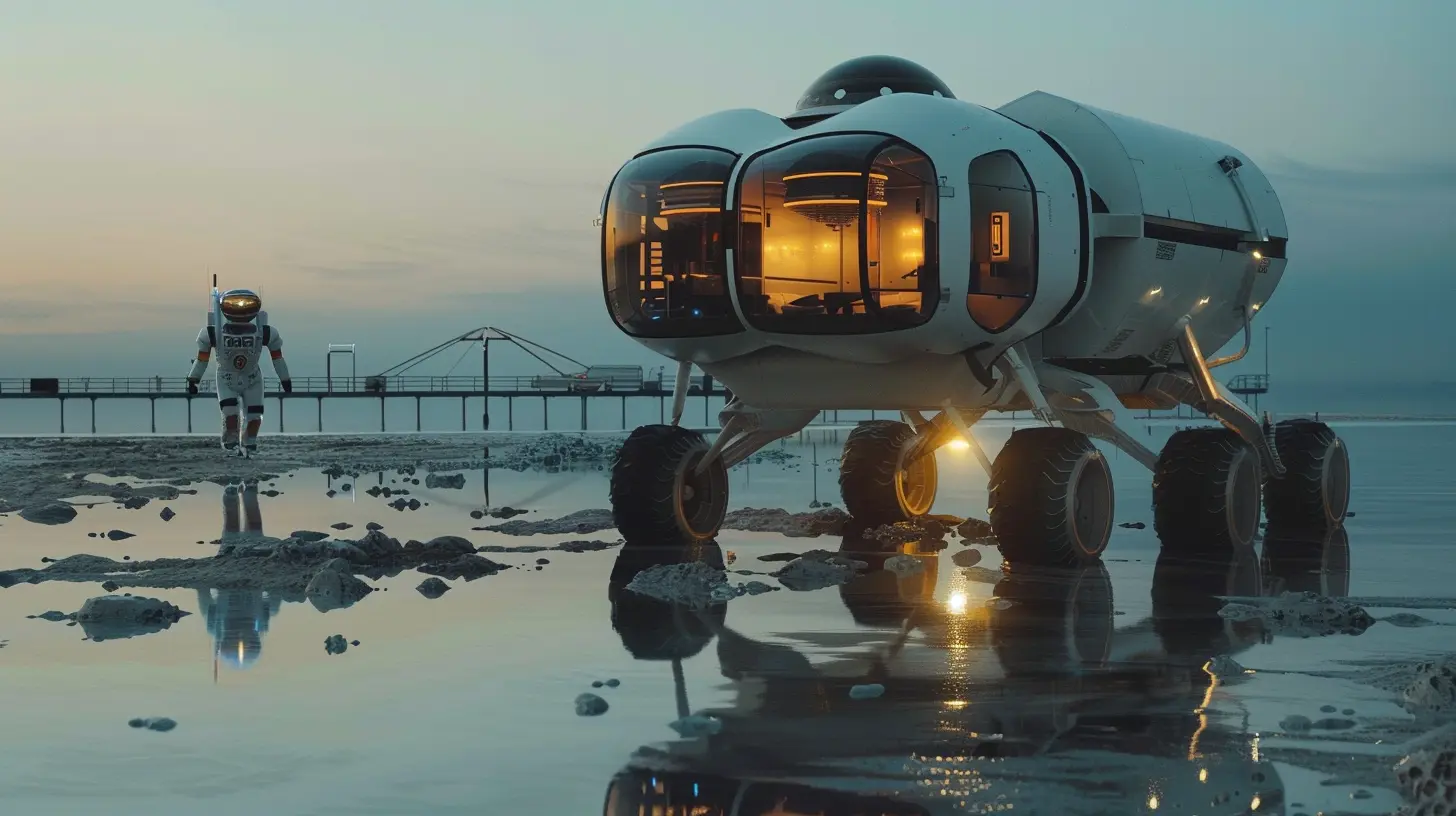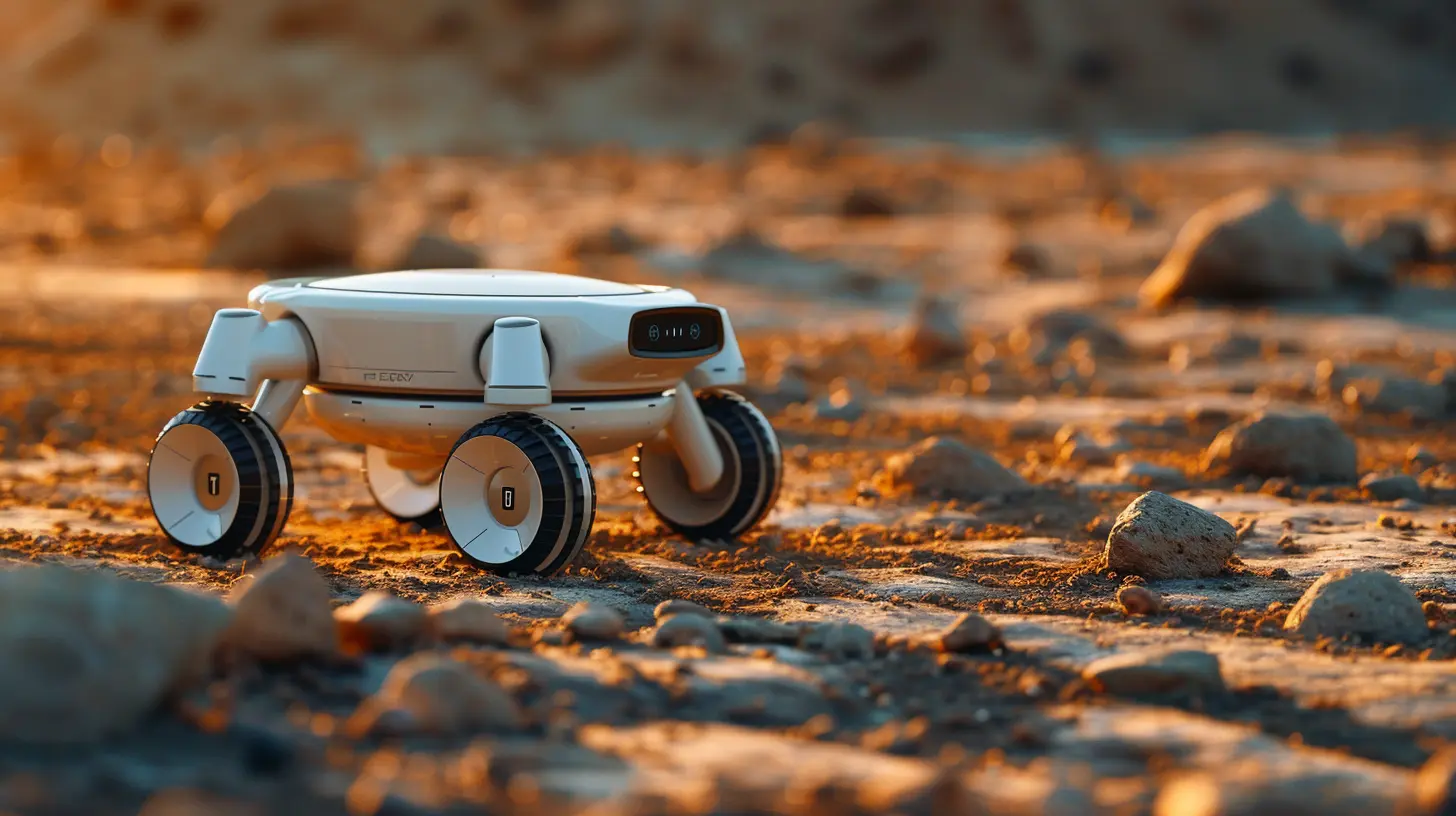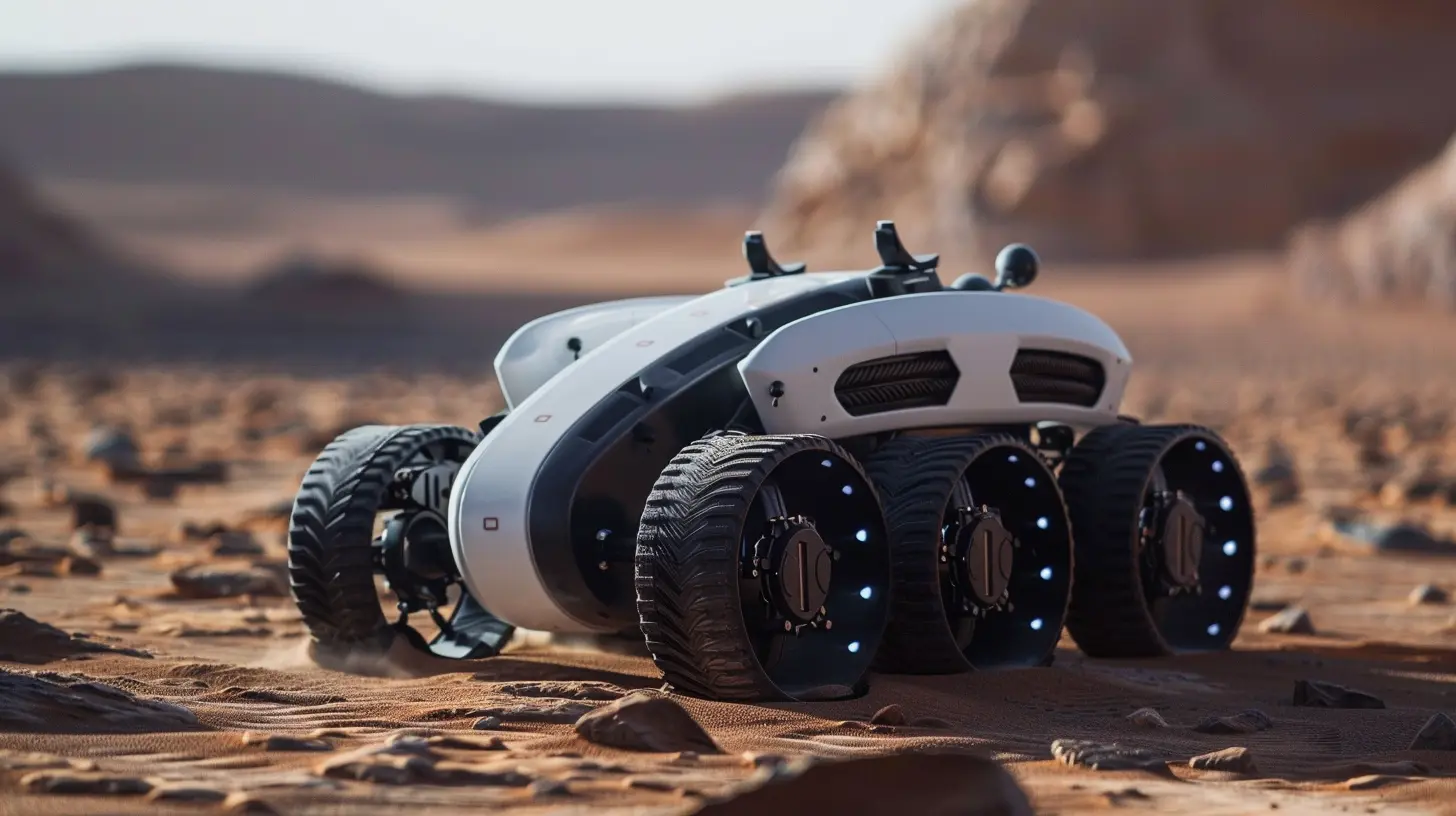Mars Colonization: The Role of Autonomous Robots in Building Habitats
21 October 2025
The dream of colonizing Mars isn't just a sci-fi fantasy anymore—it's becoming a tangible goal. With organizations like NASA, SpaceX, and other private entities setting their sights on the Red Planet, one big question remains: Who will build our first homes on Mars?
Here’s the thing—before humans can even set foot on Martian soil, someone (or something) needs to lay the groundwork. And this is where autonomous robots step in. These machines will be the pioneers, constructing the first habitats, setting up essential infrastructure, and ensuring a safe environment for the first human settlers.
So, how exactly do robots fit into this grand vision? Let’s break it down. 
Why Do We Need Robots for Mars Colonization?
Mars is a downright hostile place. Extreme temperatures, dangerous radiation, and a thin atmosphere make it impossible (and downright suicidal) for humans to begin construction manually. That’s where robots come in—they don’t need oxygen, food, or breaks, and they can operate in the harshest conditions without a hitch.Here are some reasons why autonomous robots will be crucial for building habitats on Mars:
- Harsh Environment: Radiation exposure, dust storms, and sub-zero temperatures make human survival without shelter nearly impossible.
- Time Lag in Communication: Since Mars is, on average, 225 million kilometers away from Earth, direct human control of robots isn’t feasible. Autonomous systems need to function with minimal input.
- Cost-Effective: Sending robots instead of humans lowers expenses while reducing mission risks.
- Precision & Efficiency: Automated systems can work around the clock, ensuring faster and more precise construction.
But how will these robots actually build our future homes on Mars? Let’s dive into the technology behind them. 
How Autonomous Robots Will Build Martian Habitats
1. Site Selection and Terrain Mapping
Before any construction begins, robots need to scout the best locations. AI-powered rovers, like NASA’s Perseverance, are already experts at mapping Martian terrain. Future iterations of these machines will collect environmental data, assess soil conditions, and identify stable locations for building habitats.Some key technologies involved:
- LiDAR (Light Detection and Ranging): Helps map 3D topography.
- Ground-Penetrating Radar: Identifies underground ice deposits, crucial for water resources.
- AI Algorithms: Analyze data to suggest the optimal building spots.
2. Autonomous Construction Bots
Once a site is chosen, construction begins. Robots won’t be using Earth-based materials (because sending concrete to Mars is ridiculously expensive). Instead, they’ll utilize local Martian resources through a process known as ISRU (In-Situ Resource Utilization).How will they do it?
- 3D Printing with Regolith: Regolith (Martian soil) will be used to print walls, floors, and ceilings. Robots like NASA’s RASSOR (Regolith Advanced Surface Systems Operations Robot) will collect and process the soil.
- Self-Assembling Modules: Pre-made structures that unfold and assemble themselves autonomously using robotic arms.
- Autonomous Drones & Swarming Bots: Small drones and robotic swarms will work collaboratively, much like an ant colony constructing a nest.
3. Power Generation & Infrastructure Setup
Humans need energy, and so do robots. A reliable power source is critical for both life support systems and ongoing construction efforts.Autonomous robots will:
- Deploy Solar Panels: Self-assembling solar farms will be the first major energy source.
- Build Nuclear Reactors: Small modular reactors can provide consistent power, even during dust storms.
- Lay Utility Lines: Robots will install underground conduits for electricity, water, and communications.
4. Life Support Systems Preparation
The final step before humans arrive is setting up a self-sustaining habitat. Autonomous systems will:- Extract Water from Ice Deposits using electrolysis to generate both water and oxygen.
- Create Airlocks & Radiation Shields to ensure a safe living space.
- Monitor Environmental Conditions to maintain habitable temperatures and pressure.
By the time the first human settlers land, they’ll have a functioning, albeit basic, outpost waiting for them. 
The Challenges of Using Robots on Mars
Of course, nothing is ever that simple. There are still major hurdles to overcome before autonomous robots can fully take over Martian construction.1. Communication Delays
As mentioned earlier, real-time control is impossible due to Mars’ 20-minute communication delay with Earth. Robots need to be fully independent, making their own on-the-fly decisions without waiting for human input.2. Harsh Environmental Conditions
Martian dust is notorious for clogging machinery and reducing solar panel efficiency. Engineers need to develop dust-resistant materials and self-cleaning systems to prolong robot lifespans.3. Power Limitations
Since Mars receives less sunlight than Earth, solar energy alone may not be enough to sustain 24/7 operations. Finding efficient energy storage solutions (like advanced batteries or small nuclear reactors) will be crucial.4. Durability & Maintenance Issues
If a robot breaks down on Mars, there’s no repair shop around the corner. Engineers must design robots that self-repair or can be easily fixed by other autonomous systems.
Future Prospects: What Comes Next?
We’re still in the early stages of developing fully autonomous Martian construction robots, but progress is happening fast. Space agencies and private companies are investing heavily in AI, robotics, and self-sustaining habitats for deep-space missions.Some upcoming innovations include:
✔ AI-driven robotic swarms that collaboratively build structures.
✔ Self-learning construction bots that adapt based on environmental challenges.
✔ Bioengineered materials that can be grown directly on Mars, reducing reliance on Earth-based supplies.
With this rapid advancement, we’re looking at a future where humans won’t just visit Mars—we’ll live there. And when that happens, it won’t be because of human hands but because of the tireless work of autonomous robots.
Final Thoughts
Mars colonization may be humanity’s biggest challenge yet, but it’s also our best hope for becoming a multiplanetary species. While humans will eventually step foot on Martian soil, it’s the robots that will make it possible.From scouting the best locations to 3D-printing shelters and installing power grids, autonomous machines will lay the groundwork for the first human colony on another planet.
So, next time you hear about a rover landing on Mars, remember—it’s not just another science experiment. It’s a tiny step toward the future of human civilization beyond Earth.
all images in this post were generated using AI tools
Category:
Space TechnologyAuthor:

Ugo Coleman
Discussion
rate this article
1 comments
Carrie Hill
What an exciting glimpse into the future! The idea of autonomous robots paving the way for Mars colonization is truly inspiring. They’ll not only help build habitats but also spark our imagination about life beyond Earth. Cheers to a new era of exploration! 🚀🌌
October 25, 2025 at 10:49 AM

Ugo Coleman
Thank you! I'm glad you found the vision of autonomous robots in Mars colonization inspiring. Their role is indeed pivotal for both construction and igniting our imagination about the future of space exploration! 🚀


